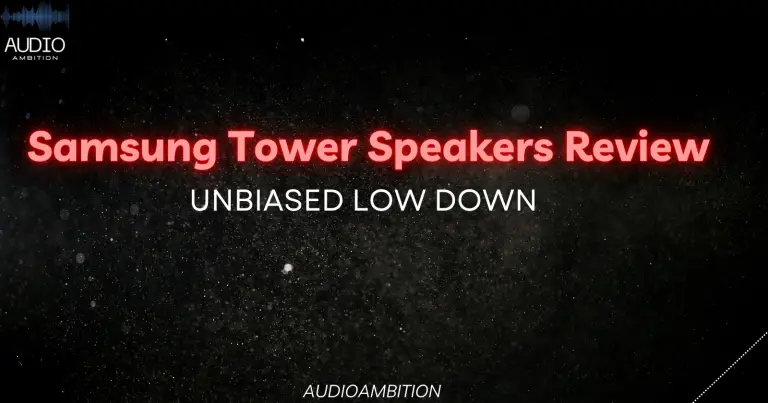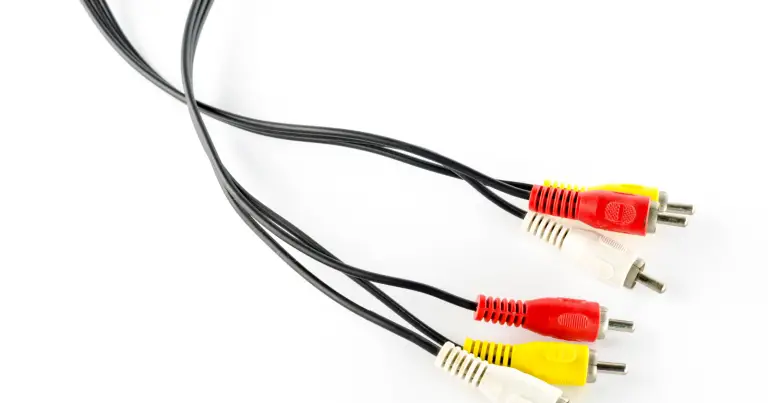Does your bass on your speakers lack power and boominess and doesn’t seem to produce the right blast? Wondering How to Fix Bass On Speakers? What you have to do is to create the right bass preset on the receiver but this can be a hassle, especially for a starter. Read this article, How to Fix Bass On Speakers, to know the solution.
How to Fix Bass On Speakers?
So, How to Fix Bass On Speakers? It could be disheartening if after you’ve properly set the bass management on the receiver, your bass still doesn’t give the right impact and accuracy.
However, there are very simple and effective steps you can apply to make your bass beefier, heavier, and sound amazing. If followed properly, these golden steps will make your bass on your speaker blast the crowds out of their shoes at concerts. Read on.
Please note: it is assumed that you’ve already created the right bass preset but still feels that something is lacking.
1. Get Rid of the Distortion
You can achieve this by turning your maximum volume point up to just below the distortion level.
Either you’re using an amplifier or a receiver (amp would be used as a general term for both in this article) to power your speaker, set the gain to low. Play some music and slightly increase your amp’s volume until you hear distortion in the music.
Turn down the volume gradually until the distortion is gone and the music sounds clean. Mark the level of the amp’s volume – this level is the maximum volume your amp can go to play music without any distortion.
Maintaining the volume level, set the amp’s gain to high until you hear distortion again.
Slightly turn down the gain until the distortion is gone, your amp gain is now set and you can mark this level of amp gain.
You may choose to maintain this amp’s volume level or lower it to a more comfortable level.
2. Flatten the Signal, Open The Low-Pass Filter
Turn your amp’s gain to its lowest, switch its low-pass filter on, and set the filter as high as it will go – turn off the bass boost, if available.
If the amp has remote level control, set it to the mid-position (so that you can later choose to boost or cut down the bass on an individual song).
Adjust your amp’s bass tone control to its zero, mid, or flat setting (the three terms are the same depending on whichever it’s called on your amp).
If the amp has a subwoofer level control, set it also to its mid or ‘no gain’ setting – turn down the gain.
Some amps have a crossover, low-pass filter, or bass boost on their subwoofer output. Turn all these off too.
Note: If you end up using a receiver and an amplifier together for your system. Don’t use the crossovers, low-pass filters, or bass boosts on the receiver and the amplifier together at the same time – use on just one.
If you do, something called phase distortion will generate around each filter or boost’s crossover frequency, messing up the sound.
Watch this video: How to Fix Bass On Speakers
3. Adjust the Subwoofer Gain and Low-Pass Filter
Play music via your amp at about one-quarter volume. Raise the gain of the subwoofer amp until the sound from your subwoofer completely overpowers the sound from the other speakers, without distorting.
Turn the gain up until it distorts, then gradually turn it down until the distortion is gone and the sound is clean again. While listening to the music coming out of your subwoofer, slowly adjust the subwoofer amp’s low-pass filter downward to eliminate all the mid- and high-frequency notes disappear.
The low-pass filter eliminates any notes you don’t want your subwoofer to play.
The filter also acts as a tone control to capture the ‘edges’ of the kick drum’s sound – the attack and release of its boom — to also filter out the guitars, vocals, strings, and cymbals. Leave the bass and the low drums.
4. Set the Bass Boost and Subsonic Filter
Now that every other thing is set, if you have a bass boost, carefully turnit up to hear what the bass drum sounds like. Applying just a little bass boost will bring up the kick drum a lot.
However, if you choose to use the bass boost, be careful with it – this is where distortion is often introduced into the sound system. If you hear distortion while using the bass boost, turn low the subwoofer amp’s gain until it goes away.
Now that all the necessary steps have been taken, it’s time to bring all the music into focus by blending all the frequencies.
5. Matching the Subwoofer Level to The Receiver Volume
To achieve this, raise the amp’s volume to its maximum distortion-free position as set in step 1 above. Then slowly raise the subwoofer amp’s gain until the bass sounds balanced with the rest of the music – this should fix it.
You can turn your remote bass boost or level control up and down a bit to see what it does.
Generally, to improve the efficiency of your speakers for your listening position, your speakers should be rightly positioned before any acoustic treatment. Just like microphones, moving your speakers even a few inches can drastically change their output.
Here are a few ideas for how to best position your speakers:
- Have the speakers fire along the length of the room. This gives the low frequencies more space to develop, which usually leads to a flatter frequency response and less destructive reflections from the rear wall.
- Place your speakers at an equal distance from the side walls. This is very important for stereo imaging.
- Your head and speakers should form an equilateral triangle. That is, the distance between your head and each speaker should be the same as the distance between the speakers.
- Some speakers are designed to be placed horizontally (flat), while others are designed to stand up (tower).
- Set your speaker height so that the tweeters are about your ear level.
- Place your speakers on stands.
Finally, if you’re only using one subwoofer, you may need to upgrade or purchase a second matching subwoofer to improve your bass.
Two subwoofers are always better than one for spreading even bass over a larger listening area and also coupling very low frequencies for greater depth and dynamic range.
So there it is. Five golden tips to fix bass on speakers. As always, experiment and try different things.
To Summarize: How to Fix Bass On Speakers

How to Fix Bass On Speakers? Let’s learn!
- Get Rid of the Distortion
- Flatten The Signal, Open The Low-Pass Filter
- Adjust The Subwoofer Gain and Low-Pass Filter
- Set The Bass Boost and Subsonic Filter
- Matching The Subwoofer Level to The Receiver Volume
Hope these tips will help you make some sweet basses.






